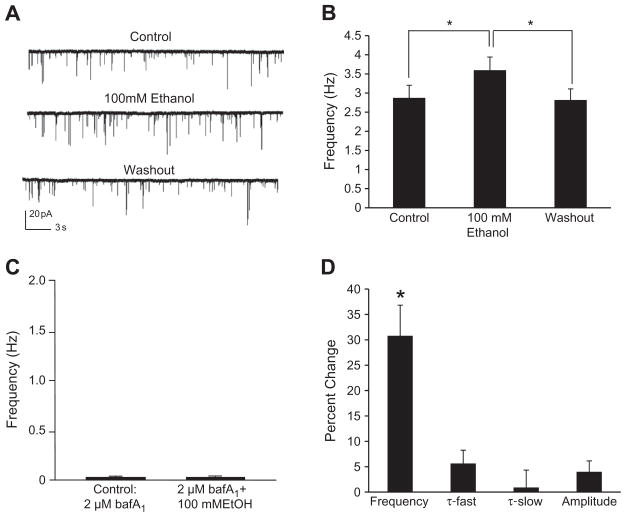Fig. 1.
Ethanol increases vesicular release of GABA. A: A trace from a representative neuron illustrating the effect of ethanol (100mM) on mIPSC frequency. B: Ethanol significantly increased mIPSC frequency compared to control and washout [*p<.05; repeated measures ANOVA; F(2,42)=18.3]. The mIPSC frequency values for the control and washout groups were not significantly different. C: Incubating the slice with bafilomycin A1 (baf A1), which eliminates the pH and electrical gradients necessary for GABA transporters to fill the vesicles (Maycox et al., 1990), greatly reduced mIPSC frequency. In the presence of bafilomycin A1, 100 mM ethanol did not significantly increase mIPSC frequency compared to control. D: Ethanol (100 mM) significantly increased mIPSC frequency (see B) in contrast to weak and non-significant effects on mIPSC fast decay time (τ-fast), slow decay time (τ-slow) and amplitude. Overall, these results support that the ethanol-induced increase in mIPSC frequency should be interpreted as an increase in spontaneous GABA release from the presynaptic terminal. This figure was reproduced from Kelm et al. (2010).

